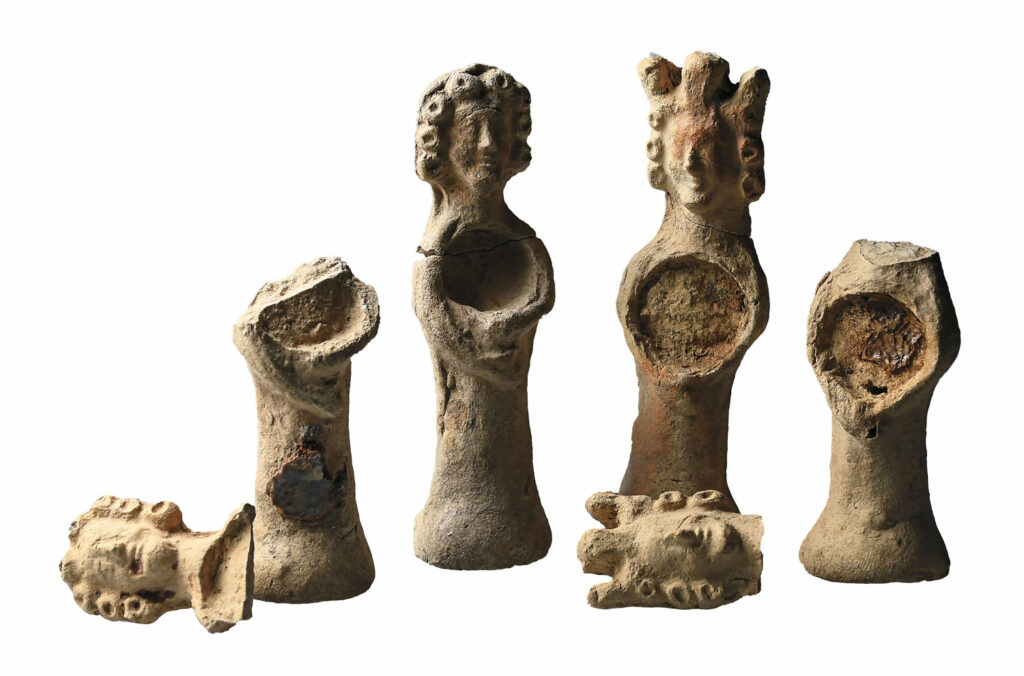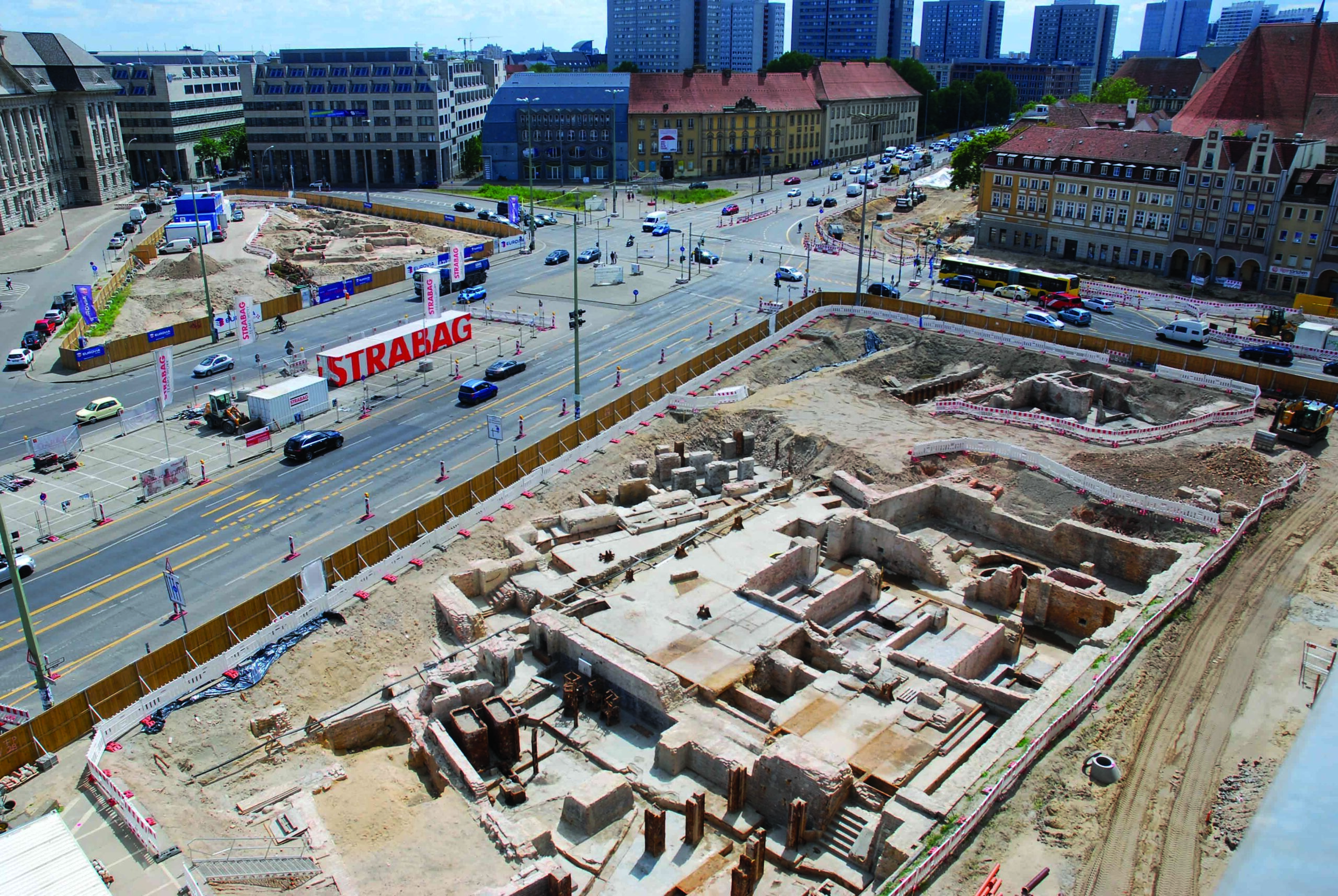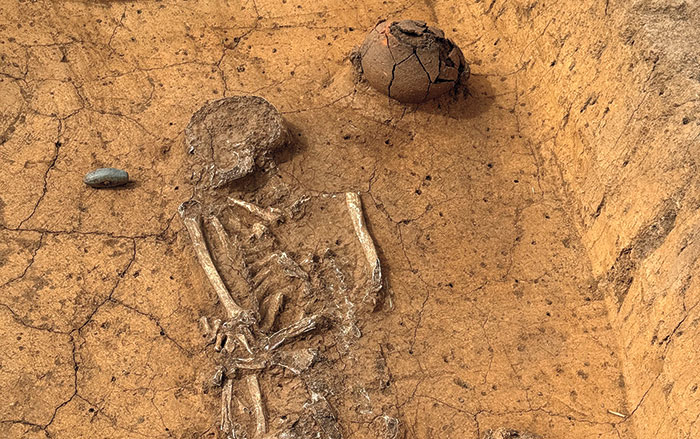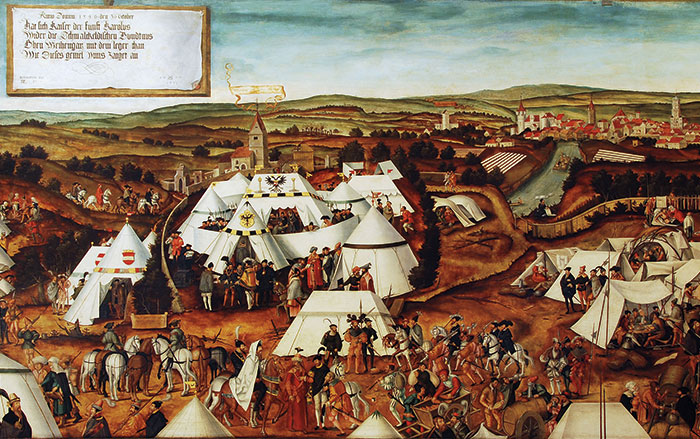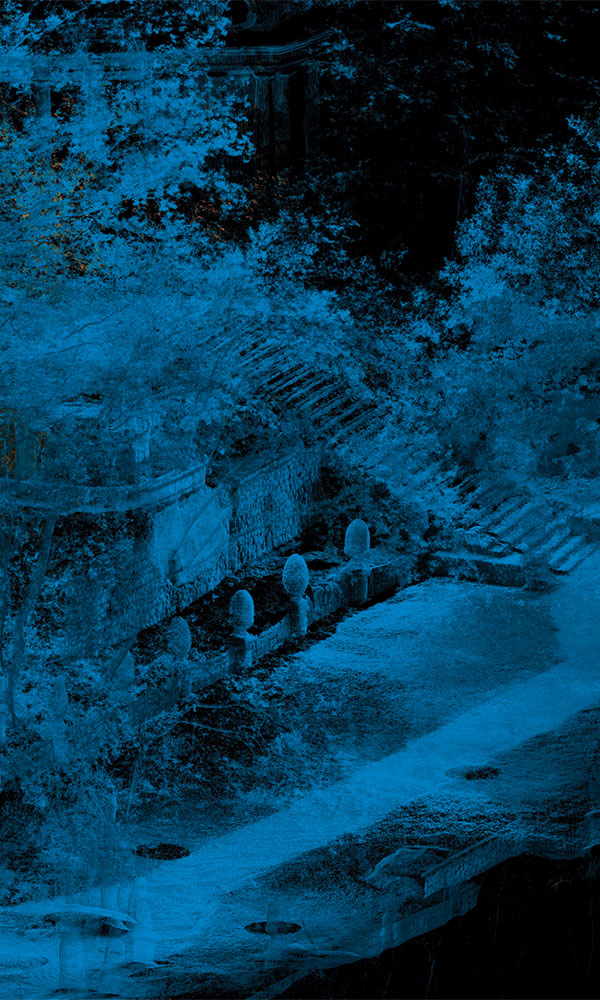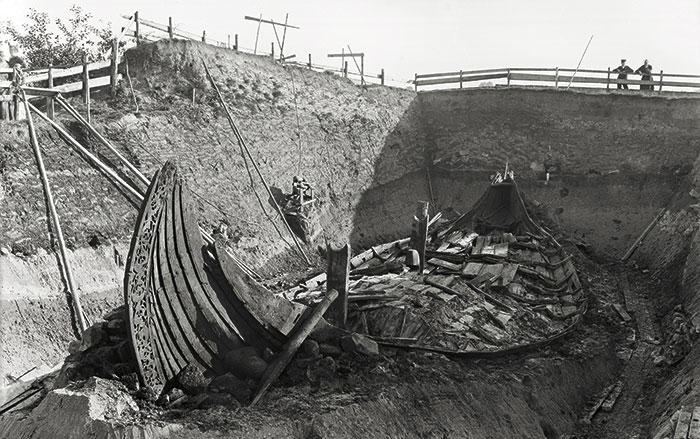
Since 2019, archaeologists have been excavating in Berlin’s oldest square, known as the Molkenmarkt, or Whey Market. (See “Berlin’s Medieval Origins.”) Thus far, they have unearthed more than 600,000 artifacts ranging from coins, jewelry, and shoes to a seventeenth-century samurai sword. Recently, the team working in this enormous excavation area, which measures 1.6 acres, uncovered 188 mid-fourteenth-century clay figurines representing women, each only about three inches tall. “Such a large number of figurines, especially in an undisturbed context, is unparalleled, not only in the German-speaking world, but almost throughout Europe,” says archaeologist Eberhard Völker of the Berlin Heritage Authority. A cavity in the center of each figurine contained splinters of bone, leading researchers to suggest that the objects served as reliquaries to hold the bones of venerated Christians. “They can be interpreted as evidence of growing popular piety,” Völker says.
Alongside the reliquaries, archaeologists found a four-inch-tall white clay statue of Saint Catherine dating to the mid-fifteenth century. “In the late Middle Ages, Saint Catherine was particularly popular as an emergency helper and patron saint,” Völker says. The saint carries a sword and a wheel, attributes of martyrdom, and is crowned with spikes as a symbol of divine marriage. The team also found a headless 3.4-inch-tall white clay figurine depicting the Madonna handing an apple to the baby Jesus. “Both figures of saints,” says Völker, “are extremely rare finds that allow a small insight into the civic piety of the late Middle Ages.”
